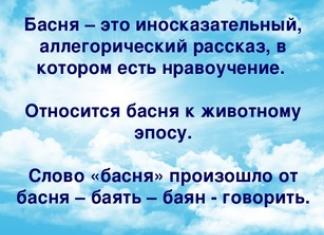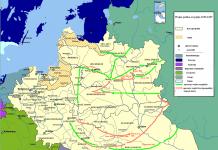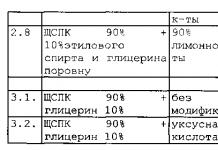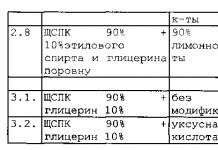Hello! In this article we will tell you everything about staff motivation.
Today you will learn:
- What is motivation and why to stimulate employees.
- What types of motivation exist.
- The most effective ways to motivate employees to perform their duties efficiently.
Concept of staff motivation
It is not often that you meet a person who is completely and completely satisfied with his job. This is because people often occupy positions not according to their calling. But it is within the power of the manager to make sure that the work process is comfortable for everyone, and that employees perform their duties with pleasure.
Successful businessmen know firsthand that their employees need to be stimulated and encouraged in every possible way, that is, motivated. Labor productivity, the quality of work performed, the company’s development prospects, etc. depend on this.
Motivation of personnel in the organization – These are activities aimed at a person’s subconscious, when he has a desire to work effectively and perform job duties efficiently.
For example, imagine a team where the boss does not care about his subordinates. It is important to him that the work is completed in full. If an employee fails to do something, he will be fined, receive a reprimand or other punishment. In such a team there will be an unhealthy atmosphere. All workers will work not at will, but under compulsion, with the goal of...
Now let’s consider another option, where the employer motivates the staff in every possible way. In such an organization, all employees are likely to have friendly relations; they know what they are working for, are constantly developing, benefit the company and receive moral satisfaction from this.
A good manager simply must be able to stimulate staff. Everyone benefits from this, from ordinary employees to the highest management of the company.
Personnel motivation goals
Motivation is carried out in order to unite the interests of the enterprise and the employee. That is, the company needs high-quality work, and the staff needs a decent salary.
But this is not the only goal pursued by employee incentives.
By motivating employees, managers strive to:
- Interest and attract valuable personnel;
- Minimize the number of people leaving (eliminate “staff turnover”);
- Identify and deservedly reward the best employees;
- Monitor payments.
Theories of personnel motivation
Many aspiring businessmen thinklessly approach solving motivation issues. But in order to achieve the desired results, it’s not enough just. It is necessary to analyze the problem and move on to its competent resolution.
To do this, it is necessary to study the theories of motivation of famous people. We will look at them now.
Maslow's theory
Abraham Maslow argued that in order to effectively motivate your employees, you need to study their needs.
He divided them into 5 categories:
- Physical needs– this is a person’s desire to satisfy his needs at the physiological level (drink, eat, relax, have a home, etc.).
- The need to be safe– all people strive to be confident in the future. It is important for them to feel physical and emotional safety.
- Social needs- Every person wants to be part of society. He strives to have a family, friends, etc.
- Need for recognition and respect– people strive to be independent, recognized, have status and authority.
- The need to express oneself– a person always strives to conquer heights, develop as a person, and realize his potential.
The list of needs is compiled in such a way that the first item is the most important, and the last is less significant. A manager doesn't have to do everything 100%, but it is important to try to address every need.
McGregor's "X and Y" theory
Douglas McGregor's theory is based on the fact that people can be controlled in 2 ways.
Using theory X, control is carried out using an authoritarian regime. It is assumed that the team of people is disorganized, people hate their work, shirk their duties in every possible way, and need strict control from management.
In this case, in order to improve work, it is necessary to constantly monitor employees, encourage them to conscientiously perform their job duties, and develop and implement a system of punishments.
TheoryY radically different from the previous one. It is based on the fact that the team works with full dedication, all employees take a responsible approach to fulfilling their duties, people organize themselves, show interest in work, and strive to develop. Therefore, managing such employees requires a different, more loyal approach.
Herzberg Theory (Motivational-Hygiene)
This theory is based on the fact that doing work brings satisfaction or dissatisfaction to a person for various reasons.
An employee will be satisfied with his job if it contributes to his self-expression. Personnel development depends on the possibility of career growth, the emergence of a sense of responsibility, and recognition of employee achievements.
Personnel motivation factors that lead to dissatisfaction are associated with poor working conditions and shortcomings in the company's organizational process. This could be low wages, poor working conditions, an unhealthy atmosphere within the team, etc.
McClelland's theory
This theory is based on the fact that people's needs can be divided into 3 groups.
- Employees' need to manage and influence other people. People with this need can be divided into 2 groups. The first ones simply want to control others. The latter strive to solve group problems.
- Need for success. People with this need strive to do their job better every time than the previous time. They like to work alone.
- The need to be involved in some process. These are employees who want recognition and respect. They love to work in organized groups.
Based on the needs of people, it is necessary to introduce the necessary incentive measures.
Process theory of employee stimulation
This theory is based on the fact that a person wants to achieve pleasure while avoiding pain. The manager, acting according to this theory, should reward employees more often and punish less often.
Vroom's Theory (Expectancy Theory)
According to Vroom, the peculiarities of personnel motivation lie in the fact that a person performs the work that, in his opinion, will satisfy his needs with the highest quality possible.
Adams theory
The meaning of this theory is as follows: human labor should be rewarded accordingly. If an employee is underpaid, then he works worse, and if he is overpaid, then he works at the same level. Work performed must be fairly compensated.
Types of staff motivation
There are many ways to motivate employees.
Depending on how you influence your subordinates, motivation can be:
Straight– when the employee knows that if the work is done quickly and efficiently, he will be additionally rewarded.
Direct motivation, in turn, is divided into:
- Material motivation of staff– when an employee is stimulated, bonuses, cash rewards, trips to sanatoriums, etc.;
- Non-material motivation of personnel– when the work of employees is recognized by management, they are given certificates, memorable gifts, working conditions are improved, working hours are adjusted, etc.
Indirect– in the course of stimulating activities, the employee’s interest in work is renewed, he feels satisfaction after completing a task. In this case, employees have a stronger sense of responsibility, and management control becomes unnecessary.
Social– a person understands that he is part of a team and an integral part of the team. He is afraid of letting his colleagues down and does everything to complete the tasks assigned to him as efficiently as possible.
Psychological– a good and friendly atmosphere is created for the employee within the team and the company itself. A person should want to go to work, participating in the production process, he should receive psychological satisfaction.
Labor– stimulation methods aimed at human self-realization.
Career– when the motivation is to move up the career ladder.
Gender– the employee is motivated by the opportunity to brag about his successes to other people.
Educational– the desire to work arises when an employee wants to develop, learn something, and be educated.
In order for staff motivation methods to bring the desired result, it is necessary to use all types of employee incentives in combination.
Basic levels of staff motivation
All people are unique and individual. Some are careerists and the prospect of career growth is very important to them, while others prefer stability and lack of change. Based on these considerations, managers must understand that methods of stimulating employees must be selected individually for each employee.
There are 3 levels of motivation:
- Individual motivation– The employee’s work must be paid decently. When calculating the amount of payments, the knowledge, skills and abilities that the employee possesses must be taken into account. It is important to make it clear to the subordinate that if he performs his duties well, he will receive a promotion.
- Team motivation– a group of people united by one cause and goal works more efficiently. Each team member understands that the success of the entire team depends on the effectiveness of his work. When motivating a group of people, it is very important that the atmosphere within the team is friendly.
- Organizational motivation– the entire team of the enterprise needs to be united into one system. People must understand that their organization is a single mechanism and a positive result depends on the actions of everyone. This is one of the most difficult tasks for a leader.
Systematic approach to personnel motivation
In order to competently carry out incentive activities, it is necessary to remember that motivation is a system consisting of 5 stages.
Stage 1. Identifying the problem of staff motivation.
In order to understand what kind of motivational activities to carry out, the manager needs to analyze the motivation of the staff. To do this, you need to conduct a survey (it can be anonymous) and identify what your subordinates are dissatisfied with.
Stage 2. Implementation of management, taking into account data from the analysis of motivation and its goals.
When motivating employees, management must work closely with staff. Based on the research data, implement those methods that will bring benefits specifically to your enterprise.
For example, if the majority of employees are not satisfied with the length of the working day at the enterprise, then changes need to be made in this direction.
Stage 3. Influence on employee behavior.
When carrying out activities to motivate staff, it is necessary to monitor changes in employee behavior.
Employees will change it if:
- Management will accept constructive criticism;
- Reward employees in a timely manner;
- Demonstrate correct behavior by example;
- They will be taught the required behavior.
Stage 4. Improving the staff motivation system.
At this stage, it is necessary to introduce non-material methods of stimulating employees. Workers need to be convinced of the need to increase their productivity. The manager must “ignite” the subordinate and find an individual approach to each.
Stage 5. A well-deserved reward.
The company should develop a system of bonuses and incentives. When employees see that their efforts are rewarded, they begin to work better and more productively.
Methods and examples of staff motivation
There are many ways to motivate employees. But before you put them into practice, think about which incentive methods are suitable specifically for your production.
We have compiled the TOP 20 best methods of motivation, from which each manager will choose a method that is suitable specifically for his production.
- Salary . This is a powerful motivator that forces an employee to do his job well. If wages are low, it is unlikely that this will inspire workers to devote 100% to the production process.
- Praise . Every person who conscientiously performs his work is pleased to hear that his work did not go unnoticed. The manager needs to periodically analyze the work of employees and not neglect praise. Using this method, you don’t spend a penny, but increase your productivity significantly.
- Address employees by name . For the authority of the director of the company, it is very important to learn the names of all employees. By addressing a person by name, a leader shows his respect for his subordinate. The employee understands that he is not just a faceless secretary or cleaning lady, but a person who is valued.
- Additional rest . Some enterprises encourage workers to do their work faster and better by offering additional rest. For example, an employee who showed the best result at the end of the week may leave work several hours earlier on Friday. Thus, passion and zeal to be a winner awakens in the team.
- Awarding with memorable gifts . On the occasion of any memorable dates, you can present your employees with memorable gifts. These may be trinkets, but if you engrave it, then the employee will probably show off such a sign of attention to his friends for the rest of his life.
- Promotion prospect . All employees must understand that if they perform their work well, they will receive a promotion. The prospect of moving up the career ladder is as motivating as material rewards.
- Opportunity to express your opinion and be heard . In any team, it is important to give all employees the opportunity to express their opinions. But it’s not enough to just listen; management must also listen to the advice and wishes of its employees. This way, employees will understand that their opinions are taken into account and listened to.
- The opportunity for each employee to personally communicate with the company’s management . All managers, first of all, must understand that they are the same people as their subordinates. Directors only organize the production process, and the execution of work depends on their subordinates. Therefore, it is regularly necessary to organize personal meetings with employees, where important issues on a variety of topics can be raised.
- Hall of Fame . This is an intangible method of motivation that greatly increases productivity. To implement it, it is necessary to create an honor board where portraits of the best employees will be posted. Thus, production competitions are created that stimulate workers to improve their production performance.
- Provide the opportunity to fulfill your . This method is only suitable for individual companies. If an office employee has routine work that he can do without leaving home, he can be asked not to come to his workplace on certain days. But the main condition will be high-quality performance of job duties.
- Nice job title . Each profession and position is good in its own way. But if a nurse in a medical institution is designated as a junior nurse, then the person will not be ashamed to say who he works for.
- Corporate events . Many enterprises organize parties on the occasion of major holidays. At these celebrations, people communicate in an informal setting, relax, and make new acquaintances. Corporate events help distract employees and demonstrate the company's care for them.
- Public thanks . You can praise an employee not only personally. It's best to do this publicly. This idea can be implemented in several ways. For example, announcing the best employee on the radio, through the media or public address system at the enterprise. This will encourage others to do better so that everyone knows about their results.
- Providing discounts . If a company produces a product or provides services, then a discount can be provided for employees of this company.
- Accrual of bonuses . Material incentives are an effective method of motivating staff. Employees need to set a goal, upon reaching which they will receive certain additional payments to the basic salary in the form of bonuses.
- Motivational board . A simple but effective method of motivating employees. To implement the idea, it is enough to draw a graph of the productivity of each participant in the production process on the demonstration board. Employees will see who performs better and will strive to become a leader.
- Training at company expense . It is important for many employees to improve and... By sending employees to seminars, conferences, trainings, etc., the manager shows his interest in the professional growth of his subordinate.
- Payment for a subscription to a sports club . From time to time, teams can organize production competitions, at the end of which the best employee will receive a subscription to a fitness club.
- Coverage of transportation costs, payment for communication services . Large companies often motivate their employees by paying for their transportation costs or cell phone service.
- Creating a bank of ideas . At an enterprise, you can create a bank of ideas in the form of an electronic mailbox. Anyone can send letters to it with their suggestions. Thanks to this, each employee will feel important.
Increasing the motivation of personnel in certain professions
When developing motivational measures, it is important to take into account the profession of workers and the type of employment.
Let's look at an example of motivating workers in some professions:
| Profession | Motivation methods |
| Marketer |
Provide the opportunity to make decisions independently; Pay a bonus (a certain percentage of sales) |
| Manager |
Organize production competitions with other managers; Give bonuses depending on sales volumes; Link wages to company profits |
| Logistician | For people in this profession, wages most often consist of a salary and a bonus. Moreover, the salary is 30%, and 70% are bonuses. They can be motivated by the size of bonuses. If their work did not cause failures, then the bonus is paid in full |
Non-standard methods of modern personnel motivation
In the Russian Federation, non-standard methods of stimulating labor are rarely used. But nevertheless they bring good results.
Not long ago, a survey was conducted in which office workers from different parts of Russia took part. They answered questions: what bonuses they would be happy with and what they want to see in the workplace.
Most people preferred:
- Office kitchen;
- A machine where everyone can make their own coffee for free;
- Soul;
- Recreation room, bedroom, smoking room;
- Exercise machines;
- Massage chair;
- Tennis table;
- Cinema hall;
- Scooters.
The fair sex preferred massage chairs and gyms, while the stronger sex preferred entertainment (table tennis, scooters, etc.).
Professional assistance in motivating employees
If you are a young manager and doubt the correctness of developing staff motivation, you have 2 options to get out of this situation.
- You can contact special organizations that, for a fee, will develop a motivation system and successfully implement it in your company.
- Or enroll in a business school that will teach you the basics of management.
What will good employee motivation bring?
If a manager properly stimulates his employees, then within a few weeks a positive result will be noticeable.
Namely:
- Employees begin to take a more responsible approach to performing their job duties;
- The quality and productivity of labor increases;
- Production indicators are improving;
- Employees develop a team spirit;
- Personnel turnover is reduced;
- The company begins to develop rapidly, etc.
If you are a new entrepreneur, you must properly motivate your employees:
- First, always encourage your subordinates to get the job done;
- Second, ensure that employees' basic needs are met;
- Thirdly, create comfortable working conditions;
- Fourth, be loyal to your employees.
In addition, use the following tips:
- Take an interest in the lives of your subordinates, ask about their needs;
- Do not scold employees with or without reason. Better help them do the work that the employee can’t handle. After all, the failures of employees are the failures of managers;
- Do analysis periodically. Conduct surveys, questionnaires, compile work diaries and internal reporting;
- Pay unscheduled bonuses and incentives.
Conclusion
The role of staff motivation in any enterprise is quite large. It is within the power of the employer to create such working conditions where the employee wants to work with full dedication. The main thing is to competently approach the development and implementation of incentive methods.
Personnel motivation traditionally means bonuses to employees for meeting and exceeding established technical and economic performance indicators for a certain period of time. Selection of indicators on the basis of which the team and individual employees are rewarded is a rather complex process. The development and maintenance of motivational programs is very labor-intensive, but gives a significant effect...
It is necessary that the bonus system corresponds to the production tasks in a given department and in the company as a whole, and stimulates the labor efforts of the team or a specific employee. The established indicators and bonus conditions should not contradict each other, otherwise the improvement of some results may lead to a deterioration in others.
Taking into account specific production objectives, bonus indicators (conditions) can be aimed at:
maintaining the already achieved level (extremely high or acceptable) - fulfilling the production task, ensuring the standard level of quality, etc.;
further improvement of the initial indicator (condition) - exceeding the task, increasing the level compared to the base, growth (increase) in relation to the previous period.
In order for the use of certain incentive payments in a company to be economically feasible, first of all they should be classified according to their intended purpose, which determines both the form and content of the incentive payment and its link to the basic (tariff) salary.
Bonuses for main (current) performance results occupies a dominant place among incentive systems. It is necessary that there is a clear connection between the results of work and the amount of remuneration, and thus one of the fundamental principles of remuneration is observed - the direct dependence of the remuneration received on the result.
Bonuses for performing work beyond the basic labor standard(job duties) of the employee. The procedure for bonuses for exceeding standards must be determined for piece-rate workers.
These types of incentives are the most common; they have a large share in wages. Their distinctive feature is the presence clear quantitative parameters, allowing you to control the level of accrued wages both to the employee himself and to his immediate supervisor. If the procedure for calculating the bonus is known to a person in advance, he will achieve the level of earnings to which he strives (together with other members of the team). The bonus system must clearly define the relationship between technical and economic indicators and the size of bonuses, determine the range of employees to be encouraged, and the frequency of bonuses.
The difficulty lies in the fact that in many cases, at industrial enterprises, bonuses are given for fulfilling established indicators 100%, while the job description requires the same: a salary or tariff rate is paid for work in accordance with the standards. Therefore, in practice it is quite difficult to determine the “threshold for starting bonuses” (100.1% or some other value).
The size of bonuses should be set based on the tasks that need to be solved using the bonus system. If regular performance of indicators at a certain level is required, then a fixed amount of bonuses for performing work within specified limits is appropriate; if we are talking about improving indicators, then differentiated bonuses are introduced for each unit of improvement in the indicator. In some cases, both the performance of an indicator at a given level and its improvement are stimulated.
The frequency of bonus payments (per month, quarter, etc.) should be established depending on the specifics of the organization of production, the nature of bonus indicators, and the availability of appropriate accounting and operational records.
With the current bonuses for workers, managers, specialists and employees of a production unit for the main performance results, as a rule, a monthly bonus is established, and for managers, specialists and employees of the management apparatus - quarterly, since the indicators for their remuneration are most often determined on the basis of quarterly reporting.
Bonuses based on key performance results can be combined with both piecework and time-based wage systems. At the same time, it is advisable to use tariff earnings for time worked (or volume of work) as the base level for calculating bonuses, without including personal allowances and other additional payments not related to the conditions of performing a specific task. If a person performs several types of work for which independent indicators (conditions) are established, he must be awarded a bonus for each type of work in accordance with the bonus systems established for him.
Bonuses for performing additional functions also have their own peculiarities, since if the volume of functions or work performed is correctly established, there should be no excess working time left.
If an employee is busy in the office, performs individual functions (and bears individual responsibility), then, as a rule, no special problems arise with the selection of indicators and assessment of the achieved results of his work.
Stimulating enhanced individual business qualities
When awarding bonuses for key performance results, systems should be used that link the size of the bonus to the employee’s personal business qualities and the level of his professional skills. In those organizations where workers are fully employed during the day, personal business qualities are characterized by differences in their production results.
Such indicators may be, for example, higher output (labor productivity), better quality of work performed, careful attitude to the use of material resources, etc.
In addition, the employee’s activity in streamlining labor processes, mastery of advanced operating techniques, and the availability of documents confirming increased professional training are taken into account.
Specific indicators of professional excellence depend on the profile of the enterprise. In those of them where full utilization is not yet ensured due to a decline in production or restructuring, indicators of higher performance must also be taken into account. But the first place should be to encourage those employees whose potential abilities will become in demand in the future (for example, when market conditions change). At the same time, it is necessary that these abilities are assessed according to specific quantitative or qualitative characteristics:
knowledge of several professions (specialties), confirmed by relevant documents or previous work experience;
active participation in the development of measures aimed at improving the economic performance of the enterprise;
willingness to share existing work experience and work skills with other employees of the enterprise;
maintaining a high work culture, striving to improve and spread it.
If it is difficult to assess the individual contribution of an employee in quantitative terms directly, this can be done through the system labor contribution coefficients (CLC) And labor efficiency (KET). This assessment is given monthly by the immediate supervisor. The selection of indicators and the “price” of each of them in the bonus system at our enterprise are given in application.
Incentives for personal contribution based on team performance
The main difference between the new bonus system introduced in our company and the traditional one is that it allows us to get away from the “equalization” system, which typically pays bonuses to all personnel in the same amount, regardless of personal (and collective) labor contribution. At ZAO NTK, the bonus system includes three stages:
1. Size of the bonus incentive fund (PPF) of the enterprise is determined depending on the volume of products shipped to the consumer and the results of work on key indicators (plan, quality, budget, downtime).
2. PPF is distributed among the structural divisions of the enterprise in accordance with their labor contribution coefficient (LCC) and the share of the tariff fund of each division in the general bonus fund. The size of the CTV is determined by three to five key indicators established for each department (custom production schedule; compliance with the consumption standards for tools and auxiliary materials; absence of claims from subcontractors; implementation of repair schedules, etc., depending on the tasks assigned to this department). The share of each indicator in the total amount of the bonus reflects its importance in the production activities of the team. Based on the sum of the achieved indicators for the reporting month, the coefficient of labor contribution of each department to the overall result of the enterprise is calculated. At the same time, the amount of the bonus not received by any structural unit for failure to fulfill one or more indicators can be used to award bonuses to another structural unit whose production indicators (exceeding the plan, labor standards, performing additional volumes of work, etc.) are higher.
3. The bonus amount is distributed within the department in accordance with the employee labor efficiency coefficient (ELC). The maximum payment to one person is not limited.
The establishment of the KET of each employee is carried out collegially (by the brigade council at the suggestion of the manager) according to the accepted corporate scale of increasing and decreasing coefficients: they reflect both the employee’s production activity during the month, as well as his personal qualities, the state of labor discipline, etc. After the establishment of personal KET for each The employee’s performance is updated (against signature).
This PPF distribution system can be used in any production departments, including for management personnel (departments and services of the enterprise). It helps motivate each employee to work highly efficiently and to achieve the final result of the work of all departments and the enterprise as a whole.
The bonus system allows you to:
“Transparently” evaluate in monetary terms the contribution of each structural unit and each employee.
Compare the labor contribution of workers of the same qualifications and profession in various departments of the enterprise.
To materially interest every department and every employee in increasing the efficiency of collective and personal work.
Eliminate “equalization” in pay for members of the same team when performing work of equal qualifications and intensity.
This system is universal, in particular, it can be used when distributing bonus amounts for saving metal, electricity, delivering scrap metal, as well as for the annual results of the enterprise.
One-time bonuses and rewards
In the employee incentive mechanism, one-time bonuses and rewards have a strictly targeted purpose: they complement the systems for assessing labor contribution and remuneration, and can significantly increase the flexibility and effectiveness of incentives. With the help of one-time bonuses and rewards, the heads of organizations and their structural divisions can encourage those qualities of employees that certainly affect performance, but do not have clear quantitative indicators (discipline, authority in the team, willingness to help in case of production difficulties, general and professional culture, integrity, etc.).
One-time bonuses and rewards are always accepted not only as material, but also as moral encouragement. With their help, it is possible to correct temporary imbalances in wages, solve occasional production problems, and take into account indicators (and characteristics of labor contribution) that are not taken into account by regular incentive systems.
The most common forms of remuneration in the non-budgetary sector of the economy include bonuses based on the results of the organization’s work for the year (half year, quarter). In practice, two main organizational forms for calculating this incentive payment are used: complex And simplified.
A complex form of calculation is characterized by a traditional approach to differentiating remuneration amounts:
by salary;
by length of service, by type of activity (production areas);
on working conditions in the workplace;
according to the importance (scarcity) of individual professions.
In a simplified form of calculating lump sum payments, differentiation is carried out only on the basis of the size of the basic salary.
One-time incentives for completing particularly important production tasks can become a powerful economic lever for resolving unforeseen situations that arise in production (elimination of accidents, malfunctions, consequences of natural disasters, etc.). Typically, when performing this type of work, people have to make additional efforts, work after hours or in more difficult and dangerous conditions, with increased intensity.
In enterprises and organizations of any form of ownership with a complex management system, where both production processes and labor results significantly depend on external conditions, it is advisable to allocate certain funds to encourage the completion of such work on time (or ahead of schedule). In some cases, this reserve can be left at the disposal of the heads of individual departments.
The decision to involve employees in such work and the amount of incentives should be made by a competent manager. Therefore, the enterprise needs to establish a procedure for organizing particularly important unforeseen work and rewards for its implementation. CJSC NTK uses internal documents “Regulations on bonus payments to employees from the Chairman of the Board fund” and “Regulations on bonus payments from the foreman’s fund”. They stipulate:
list of possible unforeseen work;
persons responsible for decisions;
the procedure for involving employees in these works;
the procedure for agreeing with employees on the amount of remuneration and the amount of funds allocated for these purposes.
A number of organizations have maintained the tradition of giving one-time bonuses to employees in honor of professional holidays, birthdays, and anniversaries of the enterprise. In addition, today the leaders of many organizations are reviving such a form of non-material incentive as labor competition in production; in connection with this, there is also a need to reward the winners.
Most domestic managers mistakenly believe that a person works solely for money. In fact employee and employer are equal partners with their own goals! A person works to satisfy his needs, but to do the job well, he needs meaningful motives. Without understanding the employee's goals, it is impossible to create an effective motivation system.
There are many theories that explain the basic principles of motivating people. Successful practice shows that understanding and bringing together the goals of the employer and employee is the shortest way to increasing the efficiency of the enterprise.
Application PROCEDURE FOR CREATION AND USE OF INDICATOR CARDS FOR ASSESSING PERFORMANCE RESULTS FOR A CERTAIN PERIOD Glossary of basic terms Auxiliary units- divisions of the enterprise, the result of which is the maintenance of the main divisions of the plant. Award group- a group of positions for which the same bonus conditions are established. Group indicators- indicators for assessing the effectiveness and efficiency of the work of employees of one structural unit or the enterprise as a whole, aimed at measuring the degree of achievement of the general goals set for this group. A group indicator (usually quantitative) is common to all employees of a given group. The share of group indicators in the overall assessment is determined separately for each group of positions. Performance Evaluation Range- values of the quantitative indicator (from minimum to maximum), within which the size of the premium is determined. Individual indicators- indicators for assessing the effectiveness and efficiency of an individual employee, used to measure the degree of achievement of the goals set for him. Individual indicators can be both quantitative and qualitative. Job Performance Scorecard for Position (Further- scorecard) - a set of indicators corresponding to the key areas of responsibility of a given position, indicating the weight, range of performance assessment, calculation methodology, objects of assessment, sources of data for calculation. Qualitative (expert) indicators- indicators intended to evaluate the performance of an employee in his position, carried out on the basis of the expert conclusions of several persons (experts). Qualitative indicators are calculated in accordance with the methodology for performing expert assessment of labor results. Quantitative data- data on the company’s activities for the assessment period, expressed in specific units of measurement. Used to calculate quantitative indicators. Quantitative indicators- indicators reflecting the degree of achievement of the target result; expressed in physical or monetary units, as well as in relative form. The calculation methodology and data sources for quantitative indicators are indicated in the individual scorecard for each position. Object of assessment- one of the criteria for expert assessment, a qualitative indicator of labor results. Each object is assessed separately. A company's performance appraisal system typically uses two to five assessment objects for one expert indicator. Main divisions- divisions of the enterprise, the result of which is the production of commercial products. Reporting period- the period for which the assessment of labor results is carried out (month, quarter, year). Evaluable- a company employee holding a position included in the labor performance evaluation system. His performance in this position during the reporting period is subject to evaluation. Evaluator (expert)- a company employee included in the labor performance assessment system as an expert. Is an internal and/or external client (consumer of labor results) of the employee being evaluated. Labor performance assessment indicators- performance indicators and performance indicators of an individual employee, departments and the company as a whole. Performance indicators are divided into group and individual, quantitative and qualitative. Bonus (variable remuneration)- additional remuneration, depending both on the results of the work of a particular employee and on the achievement of the planned results of the company as a whole. N-1 level employees- employees directly subordinate to the director of the enterprise. N-2 level employees- employees directly subordinate to directors of areas. Employees at level N-3 and below- employees subordinate to lower-level managers and ordinary employees. Actual value of the indicator- the value of the quantitative indicator for assessing labor results for the reporting period, calculated in accordance with the calculation methodology given in the indicator map. 1. Map of indicators for assessing labor results (I)
Agreed: Note: 1. For main divisions, it is recommended to use two types of group indicators: an enterprise indicator and a division indicator. For positions at level N-3 and above, the enterprise group indicator is used, and for positions at lower levels, the department indicator is used. In some cases, instead of a group indicator, the “mandatory conditions” parameter may be used, under which the premium for this indicator is not calculated through algorithms, but is set in a specific numerical expression. An example is the reward card above. 2. Example of calculating bonuses: let’s assume that compliance with standards was 125.5% The premium amount was thus 12.75%. For auxiliary units, regardless of the level of position held by the employee, the performance indicator of the entire enterprise is used as a group indicator (or condition). 3. Individual indicators are determined in accordance with the key areas of responsibility of the assessed employee occupying a given position. The weight of each individual indicator should be set in the range of 10–60%. In exceptional cases, for piece workers it is allowed to set the weight of an individual indicator in the range of 10–90%. 4. The range of performance assessment for each quantitative indicator is determined on the basis of statistical data for previous periods. Such a sample should cover at least four periods. The average value of the sample for the year is taken as the maximum value of the bonus scale. For a qualitative (expert) indicator, it is necessary to provide assessment objects that reveal its essence. A performance appraisal system typically uses two to five assessment objects for each indicator. Also in the column for this indicator is a list of assessors indicating the weight of their opinions in the overall assessment. Map of performance assessment indicators (II)
5. Peer review scores may be increased to five or decreased to zero. Experts fill out an expert assessment questionnaire, then an order is issued to increase (decrease) the score. With an expert assessment of five points, the maximum bonus percentage for the indicator increases to 29.2%. Thus, with an expert assessment other than three, the bonus percentage for the indicator is calculated using the formula:
For example, department employees were given an expert rating of three points on a five-point scale, then 3: 5 x 29.2% = 17.52%. 6. The bonus card is agreed upon with the immediate supervisor of the employee being evaluated or with the head of the structural unit. 2. Rules for calculating the size of the bonus according to the indicator The methodology for calculating the amount of the bonus for each indicator is given on a separate sheet, as an appendix to map of indicators for assessing labor results and in accordance with it. To calculate the size of the bonus based on a quantitative indicator, the following methodology can be used. The performance assessment range is divided into an even number of intervals (usually from 4 to 10) as follows: first, the middle of the performance assessment range and the corresponding average bonus for the indicator are determined: As a result of sequential division of the range, we obtain the nth number of intervals: , ... . After the range of performance assessment is divided into a finite number of equal intervals, the size of the bonus for the indicator is determined according to the following rule: |
|||
x n = b and more | Graphically it can be represented like this:
Example. The average employee bonus percentage for a certain period is 20%. The weight of the indicator is 30%, the range of performance assessment is 80–120%. In this case, it is advisable to divide the range of performance assessment into four intervals: , , , . The maximum bonus amount for this indicator will be: For the gap - |
In this article you will read
- What needs to be done to ensure that staff motivation begins to bear fruit
- 24 staff motivation ideas worth paying attention to
- Why the Apple legend preferred to meet with employees in a non-traditional setting
- Examples of successful staff motivation from Russian and foreign companies
Let's consider effective ways to motivate staff, which can rightfully be called “eternal.”
Ways to motivate staff
1. Praise your employees. Praise is an important condition for employee loyalty to management and the entire company. It will not be difficult for the management to once again say “thank you” to the employee for the work done. For example, gratitude to the secretary for a competent meeting schedule. It’s just enough to say “thank you” so that in the future the secretary will be interested in performing his functions even more efficiently.
2. Address the employee by name. In small companies, managers know their employees by name. But with a constant increase in the number of employees, certain difficulties may arise in remembering the names of all employees. General Director of the LiveInternet portal German Klimenko recommends recording the names of employees in a diary if you have problems remembering everyone. Employees have been working in his company for 15-20 years - and experience confirms that nothing sounds more pleasant to a person than his own name.
3. Providing additional rest. Many managers can attest to how important additional rest can be for employees in the form of time off, the ability to come in later or leave work early. Such privileges are not always offered and not to everyone - you need to earn such a right. For example, the editors of the magazine “General Director” allow the author of the most popular Facebook post of the week to leave early on Friday. Similar staff motivation has proven itself in practice.
4. Presentation of memorable gifts. Widespread personnel motivation (especially for employees of manufacturing enterprises). Employees are awarded certificates, cups and other symbolic awards. The General Director of the Industrial Power Machines company, Andrey Medvedev, has seen from his own experience how effective this approach can be. His factory employees liked it, and such encouragement became honorable. But at the same time, gifts turned out to be an effective way of motivation not only for employees of manufacturing enterprises. Also, do not forget about the families of your employees. Sometimes a great gift for an employee's wife turns out to be a more effective motivation than giving it to him himself.
5. Career prospects. Quite effective motivation of staff, as stated by the employees themselves. After all, career prospects can inspire and motivate to achieve excellent results at work, contributing to the success of the company. The employee understands that he has a chance to achieve new positions and prospects in the company thanks to his efforts. In particular, in the practice of the Econika company, 15% of employees receive an increase annually. Also, many companies adhere to the practice of cultivating their top managers from ordinary managers.
6. Clear objectives and evaluation criteria. A third of directors adhere to transparent systems when setting goals and monitoring results. In particular, the director of Corus Consulting CIS company Ilya Rubtsov adheres to such priorities - he draws up a schedule on a sheet of A3 format. The vertical axis of such a graph becomes a reflection of the importance of the task, while the horizontal axis indicates labor intensity. He puts a sticker on his schedule with completed tasks to visually reflect his priorities.
7. The opportunity to express your opinion and be heard. In the work of the company, many managers prefer to involve ordinary employees in solving global problems of their companies. It is important for an employee to feel the significance of his contribution to the overall development of the company. In addition to motivating employees, this approach allows you to get quite useful ideas and recommendations from employees, because in many ways they know better how the company works, since they work directly with clients. This approach will help identify various controversial and weak points in the company’s work. In particular, the co-founder of the Tonus Club network, Irina Chirva, invites her employees to determine 3 indicators by which their work will be assessed. Based on the responses received, I was able to form a KPI assessment system and implement it in the company’s activities.
8. Personal contact with the head of the company. Personal contact with employees with whom management is not obligated to meet due to their status is important. Many famous entrepreneurs and successful businessmen resort to this approach. For example, world business legend Richard Branson decides to answer letters from his employees personally. The CEO of ArmstrongMachine provides each employee with paychecks personally, asking if there are any problems. In his work, Steve Jobs invited his subordinates on long walking walks, during which he had the opportunity to discuss issues or problems that had arisen in a relaxed atmosphere.
9. Free lunch. Some companies organize free lunches once a week. On one day, free delivery of sushi, pizza, etc. is provided to employees. This type of staff motivation is mainly widespread in the work of IT companies.
10. Honor board. Personnel motivation involves recognition of an employee's results and achievements over a certain period. In particular, McDonald's is known for its "Best Employee of the Month" stands, and the 100% Fitness Center chain names the best employees on internal radio. In addition, the employee who has become the best strives to maintain his leadership, while others will strive to impose competition and surpass the winner.
11 Possibility to work from home. Only a quarter of managers and entrepreneurs in our country provide employees with the opportunity to work on a flexible schedule or remotely. But experience suggests that productivity increases by 15% for employees working from home. Although not all positions and specialties can work from home.
12. Honorary title of the employee's position. A fairly common way to motivate staff. After all, it is important for many employees to use a beautiful, honorable, and not a standard job title when communicating with their friends. In particular, now the janitors at the Martika company (Barnaul) are called “general workers.”
13. Corporate gatherings. 10% of managers in our country periodically gather their team for various celebrations in a bowling alley, bar, etc. Many employees like this approach of holding informal evenings. Excellent opportunities are created for joint leisure in a relaxed atmosphere, and simply a great chance to relax and gain strength for future work successes.
14. Public gratitude. For example, the general director of the “Favorite Children” chain of children's goods stores walks through the offices in the central office every day, noting and thanking employees who have successfully completed their tasks. Gratitude turns out to be much more important if it is backed up with a useful gift. Usually a minor gift is enough, although sometimes it can be serious - for example, a trip to a sanatorium. Public gratitude is very pleasant for an employee. But try to express your gratitude correctly so as not to affect the feelings of other employees.
15. Discounts on services. Quite effective staff motivation in various organizations - corporate discounts for employees on various products and services of their company. Employees perceive their savings positively, and loyalty to the company increases. If a company specializes in several areas of its work, then it is simply impossible to do without providing such corporate discounts.
16. Providing bonuses. At the end of the year, all employees expect to receive various gifts, bonuses and bonuses from their employer. They can be issued for the achievement of set goals and plans - providing motivation to employees. When calculating, you can use a nonlinear scale. Payment of a 100% bonus if goals are achieved by 90% or more, 50% - if goals are achieved by 80%, if this figure is less than 70%, then no bonuses are provided. The size of the bonus can be equal to a fixed amount - for example, two monthly salaries or more. Bonuses for top managers are higher; they can be paid in several stages, including in December and March, since not every company can plan large payments at the end of the year.
17. Motivational board. Few managers know this term, we will talk about it in more detail. In fact, a motivation board is a standard marker board, which is a visual dynamic indicator of the sales level for the current date for each department or manager, and also becomes a reflection of the employee’s personal contribution to the common cause.
Experience confirms that it is possible to achieve an effect thanks to a motivation board after just a week of use. In the past, the worst managers understood that their poor sales could go unnoticed. Now an exciting game and competition begins, because no one wants to be the last. At the same time, the spirit of competition still does not prevent managers from supporting each other. They can see how much time is left until the sales plan is fulfilled, and they begin to encourage the rest of the employees - the team spirit kicks in.
18. Payment for employee training. To achieve professionalism in any job, it is important for an employee to strive for improvement in his specialty. After all, an employee who is passionate about his learning will definitely be able to achieve career growth and improve his skills, with the development of additional skills. Therefore, training and knowledge can be an important motivating factor. There can be various ways for such motivation. This includes sending employees to participate in conferences, trainings, etc. Additional knowledge should be made an advantage to inspire employees to further their education.
19. Payment for a fitness club subscription. A fairly effective motivation is to pay for the interests and hobbies of employees. Such hobbies usually relate to visiting a fitness center. Moreover, if employees are focused on improving their physical condition, then they are more focused on achieving their goals. But not everyone enjoys going to the gym. Some may be more interested in art school or piano lessons. Each person is individual, so their hobbies vary.
20. Control as a way to motivate staff. Many managers are convinced of the need to control employees. Control really allows you to motivate employees. The main idea is to provide employees with the opportunity to make independent decisions on all issues for which centralized control is not required. Allow employees to change any aspect of their work environment on their own as long as it does not pose a threat to the company's image or safety. One company in particular allows employees to wear headphones to work while enjoying their favorite music. Many companies do not prohibit employees from decorating their workplaces. Give employees more decision-making freedom within reasonable limits to achieve effective motivation.
21. Salary. Salary is one of the main ways to motivate employees. Therefore, if you cannot initially provide a sufficient salary for an employee, then other methods will turn out to be ineffective and secondary. Comfortable salary levels vary for different employees. It is important to understand what salary level will be constant and what will be flexible.
22. Bank of ideas. You should be interested in the opinions and thoughts of your employees. Many employees may have really useful and effective ideas, but do not see interest in them. Although most managers are interested in employees sharing relevant thoughts and ideas, not all managers simply know how to ask. Most of them simply interrupt the employee and reject his initiatives, which deprives employees of self-confidence and motivation. To solve this problem, it is better to get a notepad, file or other documents in which employees’ ideas will be recorded. Thanks to this approach, managers soon begin to listen better to employees, who can offer some pretty useful ideas.
23. Employee profit sharing/option. An option is one of the instruments for employees' equity participation in the company's capital. Such an instrument has become a replacement for partnership or simple corporatization of personnel. In Russian practice, option programs are considered a relatively young phenomenon. Just a few years ago such cases were rare. The main goal is to focus the company's management on long-term growth of capitalization and increasing employee loyalty to the employing company. The loyalty of managers to the company is especially relevant today, when economic growth is causing a shortage of highly qualified employees. Because of this, compensation and staff turnover increase. The introduction of option programs helps to effectively solve both of these problems.
24. Payment for travel and mobile communications. Many employees are interested in paying for their travel or mobile phone costs, as these can be quite significant. Naturally, such bonuses will be pleasant for your employees. It would seem like a small thing, but it’s nice!
- Motivation, Incentives and Remuneration
A well-thought-out system of personnel motivation in an organization allows you to manage the behavior of employees and create conditions for the prosperity of the enterprise.
Dear readers! The article talks about typical ways to resolve legal issues, but each case is individual. If you want to know how solve exactly your problem- contact a consultant:
APPLICATIONS AND CALLS ARE ACCEPTED 24/7 and 7 days a week.
It's fast and FOR FREE!
Goals and objectives
The main goal of the personnel motivation system is to stimulate personnel activities in order to increase productivity.
An interested employee performs his professional duties better, and this has a beneficial effect on the company's bottom line.
The main objectives of the motivation system:
- stimulate professional development and growth of qualifications of employees;
- optimize personnel costs;
- ensure employee loyalty and staff stability;
- orient employees towards solving the company’s strategic objectives;
- stimulate the effective work of each employee;
- attract highly qualified specialists to the company.
Kinds
There are various motivation systems. Thus, it is customary to distinguish models according to the place of their application. The most popular are Japanese, American and Western European models of motivation systems.
Domestic science and practice cannot yet boast of unique knowledge on how to develop such a system of incentives. This is largely due to the fact that for a long time there were no incentive measures other than an additional bonus and a social package.
Certain types of systems for assessing personnel performance stand apart - for example, the point model.
Points
When using a point incentive system, employees are given points for performing job functions.
With their help, you can evaluate the abilities of a particular employee, as well as such important qualities as responsibility, hard work, and the ability to work in a team.
At the end of the pay period, employees receive a bonus based on the points they accumulate.
Let's explain this scheme in practice:
- the incentive payment fund is equal to 60 thousand rubles;
- number of employees on staff – 3;
- for failure to complete tasks, the employee receives 0 points, for tasks completed without criticism - 1 (we use a simplified evaluation system);
- the maximum number of points is 14 (for all employees), 42 points (for the entire department).
So, the first head of the HR department scored 12 points, the manager – 10 points, and the HR specialist – 13 points.
We use the formula:
(maximum amount of incentive payments/total number of points)* sum of points for a particular employee = amount of remuneration
For 1st employee: (60 thousand/42) * 12 = 17143 rubles.
For the 2nd employee: (60 thousand/42) * 10 = 14286 rubles.
For the 3rd employee: (60 thousand/42) * 13 = 18,571 rubles.
Japanese
Japanese managers strive to create a system that would be aimed at organizing group work and fostering collectivism.
In their model, a significant role is given to the quality indicator. After all, it is he who helps increase the company's profits. To achieve this goal, corporations use effective wage systems, analysis of workplace organization, employee certification, etc.
The peculiarity of the Japanese system is that it emphasizes the loyalty of its employees to the companies.
Workers are identified with the company for which they work. At the same time, each employee is sure that he is a significant person for his company and its fate depends on his actions.
To prevent employees from leaving for another company, a remuneration system based on length of service is used. Employees also receive bonuses twice a year and regularly improve their skills.
In general, the payment system is based not only on length of service, but also taking into account other indicators, including the qualifications of the employee and the effectiveness of his activities.
The personnel motivation system, as we discussed earlier, is a complex of tasks. Their solution allows achieving high labor efficiency of workers.
The system is developed at a specific enterprise, taking into account the specifics of the activity, staff organization, etc.
Structure and elements
The corporate system of motivation and stimulation of the organization’s personnel consists of the following elements:
- goals and objectives (results that the company seeks to obtain);
- the company's strategy and policy in this area, taking into account the long-term development goals of the organization and the time to achieve them;
- principles of motivation and stimulation of work;
- functions of the system - regulation, planning, organization, coordination and regulation, motivation and stimulation, control, accounting, analysis;
- system structure (and non-material incentives);
- system formation technology.
Approximate diagram of the motivation system in the organization
Tools
Tools are those types of incentives that can influence staff motivation. They can be tangible and intangible. Among them are those that directly depend on specific labor results, for example, bonuses.
Indirect motivation tools are also used - reimbursement of expenses for communication, food, travel, etc.
They are used to increase employee loyalty and reduce staff turnover.
Indirect instruments do not depend on work results and are determined by the status or rank of the employee.
Development and construction features (step-by-step algorithm)
In the process of creating a personnel motivation system, the following stages can be distinguished:
- formation of the company’s goals and objectives in this area, approval of those indicators that can clearly demonstrate the results of each employee’s activities;
- approval of the tariff schedule;
- identification of tools that are planned to be used in the personnel motivation system;
- assessing the effectiveness of each employee;
- establishing a relationship between performance and remuneration.
Analysis and cost effectiveness
An analysis of the modern motivation system is necessary in order to assess whether employees are influenced by it, whether their reaction to the impact of the motivation system corresponds to management’s expectations, etc. To do this, various techniques are used - for example, analysis of variance for related samples.
The motivation system provides for certain costs for incentive tools. This is why an organization needs to track cost effectiveness.
The company is interested in an employee as long as he earns more for the company than the company spends on him.
Assessment steps
The staff motivation system is assessed in several stages:
- Stage 1. At this stage, the existing system of motivation and incentives for personnel in the organization is assessed. The company conducts a survey of employees so that the effect of material and intangible factors can be analyzed.
- Stage 2. Participants' questionnaires are handed over to the employees who will conduct the assessment.
- Stage 3. Processing questionnaires, calculating the average score for each factor.
- Stage 4. Analysis of each factor by which the company's employees are motivated. First of all, you need to pay attention to those of them that received the lowest estimated result.
Why might it not work?
Many managers are interested in the question: “Why doesn’t the motivation system work?” There could be a lot of reasons for this.
Usually they boil down to the fact that the employer, when building it, is not at all interested in the opinions of his employees.
Conducting surveys and questionnaires will help identify the needs of employees. Their satisfaction will serve as an excellent incentive for effective work.
Another common mistake is that employees do not know the company’s goals and strategy. Because of this, they cannot combine them with their own aspirations.
Example
One example of a successful and original motivation is the “Olympiad” system, implemented in the Moscow retail chain Enter. Employees earn points that are reflected in their own social network. Depending on the number of points, employees are awarded various incentives.
Different evaluation indicators were approved for different departments:
- "Golden fever"(for the sales department, delivery service and warehouse teams) points are assigned depending on the key goals of the organization, for example, selling a certain type of product;
- Confession. Every month, employees who achieve the best results receive medals and bonus points;
- "Imago". Provide for the collection of ideas to improve the company's activities. Points are awarded for each useful suggestion;
- Workshops. Organizing master classes at the request of employees.
What are the basic principles and approaches to increasing the motivation of employees in an organization? What methods are used to increase motivation? What are the mistakes when developing a motivation system?
Being a leader at the highest level is not easy. The production commander, who only gives out orders and fines, does not keep highly qualified specialists. How can you ensure that your subordinates receive moral satisfaction from their work and do not look towards competing companies?
We will consider motivation problems and their solutions in our new article. With you is the business magazine “HeatherBeaver” and regular author of publications Anna Medvedeva.
At the end of the article you will find an overview of mistakes that are made when developing and implementing motivation systems. Read and prevent management failures in your organization.
1. Why is employee motivation necessary?
A new employee in a team is usually full of ideas and enthusiasm. This distinguishes him from the bulk of workers, who are no longer so zealous in fulfilling their official duties. But after some time, the newcomer merges with the general mass of employees and also becomes more passive.
This state of affairs is typical for most enterprises. This makes management think that employees need some kind of incentive to encourage them to be active, positive and self-development. Therefore, institutions interested in increasing income and productivity are introducing a motivation system.
What it is?
This is the internal need of workers to perform their job duties efficiently and effectively, as well as the creation for them of conditions that cause this need.
The correct motivation system, that is, one that produces results, involves a combination of two types - motivation collective And personal.
It’s great when a team becomes a team of like-minded people who work together towards a common goal, and everyone is aware of this very goal. But no global goals inspire as much as personal ones.
And if management manages to delve into the system of needs of its subordinates and harmoniously link personal motivation with collective motivation, then we can say that a positive result is guaranteed.
Inspire your employees- one of the main missions of a good leader. After all, if he becomes a leader not only by position, but also due to his personal qualities, the team will follow him and conquer any labor peaks. A flexible approach to business always wins.
Many will ask the question: what to do with outright slackers? Who are not motivated by any benefits and whose only goal is to receive a salary for being present at the workplace?
Competent managers simply get rid of them. Yes, it’s tough, but the main danger of parasites is not that they receive a salary for nothing. And not even that their work has to be done overtime by other employees.
The main danger of idlers - this is demotivation of the entire team. One such element can “infect” apathy and nullify the motivation of the entire team.
Here we will briefly talk about each.
Method 1. Financial incentives
There are two types of financial incentives. The table will clearly demonstrate their essence to you.
Types of material incentives for employees:
Needless to say, material reward is the most tangible and powerful type of motivation.
Method 2. Non-material incentives
How to increase motivation using non-material rewards?
There are also different ways to do this:
- changing the work schedule to be beneficial for employees;
- corporate events;
- recognition ceremonies;
- change in employee status;
- change of workplace, etc.
The main goal of non-material incentives is to increase interest and job satisfaction using intellectual and moral incentives. And also add positivity to your workdays.
Method 3. Application of sanctions
This is the so-called negative motivation. That is, a system of punishments.
Forms of negative motivation:
- fines;
- deprivation of status;
- public condemnation;
- in special cases - criminal liability, etc.
Such methods of motivating employees can be effective, but only in certain cases. And they must be applied immediately after unwanted actions are carried out.
The most reasonable option is two-way motivation , that is, a combination of punishments and rewards. Moreover, rewards should act as a primary factor, and punishments as a secondary factor.
3. How to increase employee motivation - 7 simple tips
The employee motivation system is diverse and largely depends on the specifics of the enterprise.
We have chosen universal tools and principles that will be useful to any leader and will come in handy in any team.
Tip 1. Ask employees about their performance
This does not mean total control over the activities of each employee. Of course, there is some degree of control here, but the main goal is different. This technique is necessary primarily for the internal composure of employees.
Not everyone will count at the end of the working day, for example, the number of calls made and how many of them were successful. If the manager begins to be interested in this, the employee’s level of self-information will increase, as will internal motivation after a visual analysis of his own achievements.
Information from the article “” will complement this topic.
Tip 2. Strengthen interaction with subordinates
This is necessary to track the degree of interest of your employees in the results of their work. The majority of managers have a vague idea of the level of motivation in their team or do not have it at all. This gap is filled by ordinary communication with the team.
At pre-planned meetings, discuss not only work issues and plans for the future. Try to delve into what is important to employees now, what motivates everyone, and what hinders progress.
During detailed conversations, employees are convinced that management is interested in the lives of their subordinates, and the manager receives important information about the motivation of his employees.
Tip 3. Formulate instructions to employees as clearly as possible
The same applies to the reward system. The more specific the request is formulated, the more specific the results will be.
Every employee needs to know:
- what he does;
- why is he doing this;
- within what period of time he must do this;
- what will he get for it?
Largely thanks to specifics, the employee motivation system becomes successful.
The staff themselves will help you with this. Many of them develop interesting and useful thoughts during their working life, which are sometimes useful to put into practice. The main thing is to be able to listen and find a rational grain even in the most unusual and, at first glance, unpromising ideas.
To create a bank of ideas, keep a separate notebook or file (whichever is more convenient for you) and record all your employees’ ideas in it. Do this, and you will see that most of your colleagues have an extraordinary mind and imagination, and many have a sense of humor.
Any employee who is committed to career growth also strives to learn. A person who finds himself in his place acquires new skills in his professional field with interest and pleasure. Therefore, motivation by knowledge is a very powerful lever for self-improvement.
Let's add a small nuance. Provide the opportunity to acquire new knowledge that will be useful to employees in your production. Otherwise, you can prepare a specialist for someone else.
Tip 6. Provide employees with unscheduled rest
There are many variations of this type of encouragement. For certain achievements, employees receive additional rest in the form of time off or, for example, the opportunity to come to work later on certain days or leave a little earlier.
Example
The office supply company introduced a record of goods sold during the week. A sales report is made every Friday evening.
Based on the results of the report, the most active sales manager is calculated. As a bonus for success, he receives the right to go to work on the coming Monday not in the morning, but in the afternoon.
This type of employee motivation is very important, for example, for young professionals.
Tip 7. Encourage employees financially
We have already talked about monetary rewards above. Here it is worth mentioning separately about the calculation of annual bonuses. Such bonuses are very important for every employee, and this is natural. After all, a long reporting period is closing, and the rewards for it are the highest.
Example
If the set goals were achieved by 90% or more, the bonus is awarded in the amount of 100%.
80% of goals achieved - 50% bonus.
Less than 70% - no bonus is awarded.
4. Help in increasing employee motivation - review of the TOP 3 service companies
Now let's turn to some companies whose field of activity is related to training in the field of business management, as well as the provision of services for the development of motivation systems.
Professionals always know better how to do it and teach it to others.
1) MAS Project
The unique management system developed by this company will help improve the work process for both management and staff.
If you run a business, you will learn:
- increase the productivity of each employee;
- synchronize company goals and employee goals;
- manage projects and tasks;
- regulate areas of responsibility;
- control staff employment;
- Conduct quality planning sessions and meetings.
Thanks to the MAS Project system, employees will learn:
- track the fulfillment of goals and earned bonuses;
- manage your tasks;
- manage your employment;
- realize your role in the common cause;
- understand your own areas of responsibility;
- view all information in one resource.
You can confidently trust MAS Project. A system created while solving real business problems is the most reliable and viable.
2) Business Relations
This company is the first in Russia to begin providing training in the field of relationships. It began its activities in 1996, and in 2007 opened a corporate direction.
During their professional career, the company's specialists have become experts in the field of working with relationships. “It is the attitude to work and to life that determines the result” is the main postulate on which the entire learning process is built here.
Among others, the company offers corporate training “Business Context”, after which many organizations have already made a breakthrough in business development. The training consists of 70% practice, which allows it to dramatically increase the level of staff involvement in the work process.
3) Moscow Business School
Human resource management courses offered by the Moscow Business School will be useful not only to business managers, but also to everyone whose activities are directly related to hiring, training, motivating and improving the skills of employees.
After completing this training, you will easily:
- understand legal and financial management issues;
- develop employee motivation and reward systems;
- evaluate and hire employees;
- engage in training and development of personnel.
Business trainers and teachers at Moscow Business School are also engaged in other areas, which allows them to develop original teaching methods based on personal experience. After completing the training, you will also receive tips for further development.
5. What are the mistakes when increasing employee motivation - 5 main mistakes
Any enterprise motivation program is imperfect and often makes mistakes - this is inevitable.
We have selected the most common ones. After all, if not all, then many problems can be avoided if you know their causes.
Error 1. Punishment with rubles
This is the most ineffective employee motivation in an organization. I would even say that deprivation of bonuses and fines have the opposite effect.
As a rule, such measures are taken to stop systematic violations, and not to improve labor standards. On the one hand, this is logical. On the other hand, this approach is extremely undesirable, since it embitters people and kills any desire to perform their duties efficiently. And even more so - to develop.
Mistake 2. Lack of a feedback system
Any motivation system requires adjustments during implementation. But any change made at the suggestion of employees, that is, direct participants in the process, will be much more effective and rational.
Feedback helps to correct errors as accurately as possible. It also establishes trusting relationships between managers and the team. Each employee feels not only his importance in production, but also the weight of his voice for management.
Without feedback, it is impossible for an employee to objectively evaluate the results of his work. What are its advantages and weaknesses? In which direction should we develop? What knowledge and skills are missing to make the result of work more effective?
It will not be surprising if such an employee sooner or later submits a resignation letter, even if he copes with his responsibilities and receives a decent salary.
Mistake 3: Paying too much attention to individual employees
Selecting favorites in the team invariably suggests the lack of professionalism of the manager and his bias in resolving management issues. It’s even worse when such actions directly indicate personal relationships that have nothing to do with the work process.
A competent motivation system will tell you how to identify an employee worthy of encouragement. And this will be visible not only to management, but also to other team members.
Mistake 4. Reluctance to train employees
Saving on education is always questionable. It is impossible to increase the level of labor without increasing the level of qualifications. And the second, in turn, is impossible without special training.
The opportunity to learn additional skills and develop is a strong argument in favor of the company. Even qualified specialists are guided by this factor when choosing a place of work.
Any rational motivation system provides for employee training. And every experienced manager knows that the costs of improving the skills of employees always pay off.































